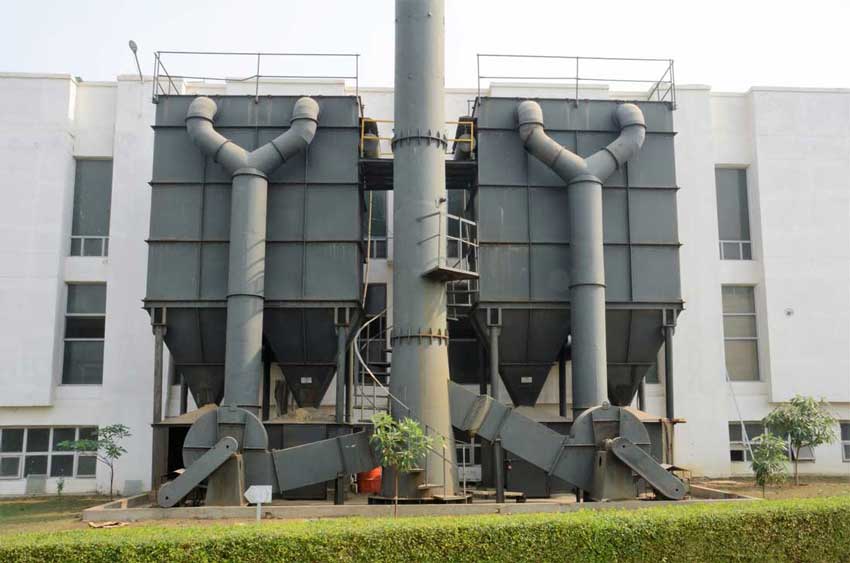Airfilt As industries continue to evolve, the need for efficient and innovative dust collection systems becomes increasingly critical. Dust collectors play a vital role in maintaining clean and safe work environments, protecting both employees and equipment from harmful particulates. In the next decade, we can expect significant advancements in dust collection technology, driven by regulatory changes, technological innovations, and growing awareness of environmental sustainability. Here are some of the key trends and predictions for the future of dust collection.

1. Enhanced Filtration Technologies
One of the most significant trends in dust collection is the development of advanced filtration technologies. Traditional filter media are being replaced by high-efficiency alternatives that can capture finer particles while maintaining airflow. Innovations such as nanofiber filters, electrostatic precipitation, and hybrid filtration systems are expected to become more prevalent. These technologies not only improve air quality but also extend the lifespan of the dust collector, reducing maintenance costs.
2. Integration of Smart Technologies
The integration of smart technologies into dust collection systems is set to revolutionize the industry. Internet of Things (IoT) devices and sensors can monitor the performance of dust collectors in real-time, providing valuable data on filter conditions, airflow, and particle levels. This data can be used to optimize the operation of the dust collector, predict maintenance needs, and ensure compliance with environmental regulations. Smart dust collectors will enable industries to achieve higher efficiency and reliability.
3. Energy Efficiency and Sustainability
As environmental concerns become more pressing, industries are increasingly focusing on energy efficiency and sustainability. Future dust collectors will be designed to minimize energy consumption and reduce their carbon footprint. Variable frequency drives (VFDs) and energy-efficient motors will be commonly used to optimize the power usage of dust collection systems. Additionally, manufacturers are exploring ways to recycle and repurpose collected dust, turning waste into valuable resources.
4. Stricter Regulations and Compliance
Regulatory bodies are continually updating standards for air quality and worker safety. In the coming years, we can expect stricter regulations governing dust emissions and exposure limits. Industries will need to invest in more sophisticated dust collection systems to comply with these regulations. Dust collectors will be required to meet higher efficiency standards, capture a broader range of particulates, and provide detailed documentation of their performance.
5. Modular and Customizable Systems
The demand for modular and customizable dust collection systems is on the rise. Industries have diverse needs based on their specific processes and environments, and a one-size-fits-all approach is no longer sufficient. Future dust collectors will offer greater flexibility, allowing businesses to tailor their systems to meet their unique requirements. Modular designs will enable easy upgrades and expansions, ensuring that dust collection systems can adapt to changing needs.
6. Health and Safety Focus
Protecting worker health and safety will continue to be a top priority for industries. Dust exposure can lead to serious health issues, including respiratory problems and long-term diseases. Future dust collection systems will be designed with enhanced safety features, such as improved containment methods, automated shutdowns in case of failures, and better ergonomics for maintenance tasks. These advancements will help create safer work environments and reduce the risk of occupational hazards.
7. Global Market Growth
The global dust collector market is expected to experience significant growth over the next decade. Emerging economies are rapidly industrializing, leading to increased demand for dust collection solutions. Additionally, the growing awareness of environmental and health impacts associated with dust exposure is driving investments in dust collection technologies. As a result, manufacturers are expanding their product offerings and entering new markets to meet the rising demand.
Conclusion
The future of dust collection is poised for exciting advancements, driven by technological innovations, regulatory changes, and a growing focus on sustainability. Enhanced filtration technologies, smart integrations, energy efficiency, stricter regulations, modular designs, health and safety improvements, and global market growth are all shaping the evolution of dust collectors. By staying ahead of these trends, industries can ensure cleaner, safer, and more efficient work environments for the next decade and beyond. Investing in modern dust collection systems is not just a compliance measure but a strategic move towards a sustainable and prosperous future.
Airfilt is India’s leading manufacturer of Dust Collector . You can contact them for further information regarding the Dust Collector at